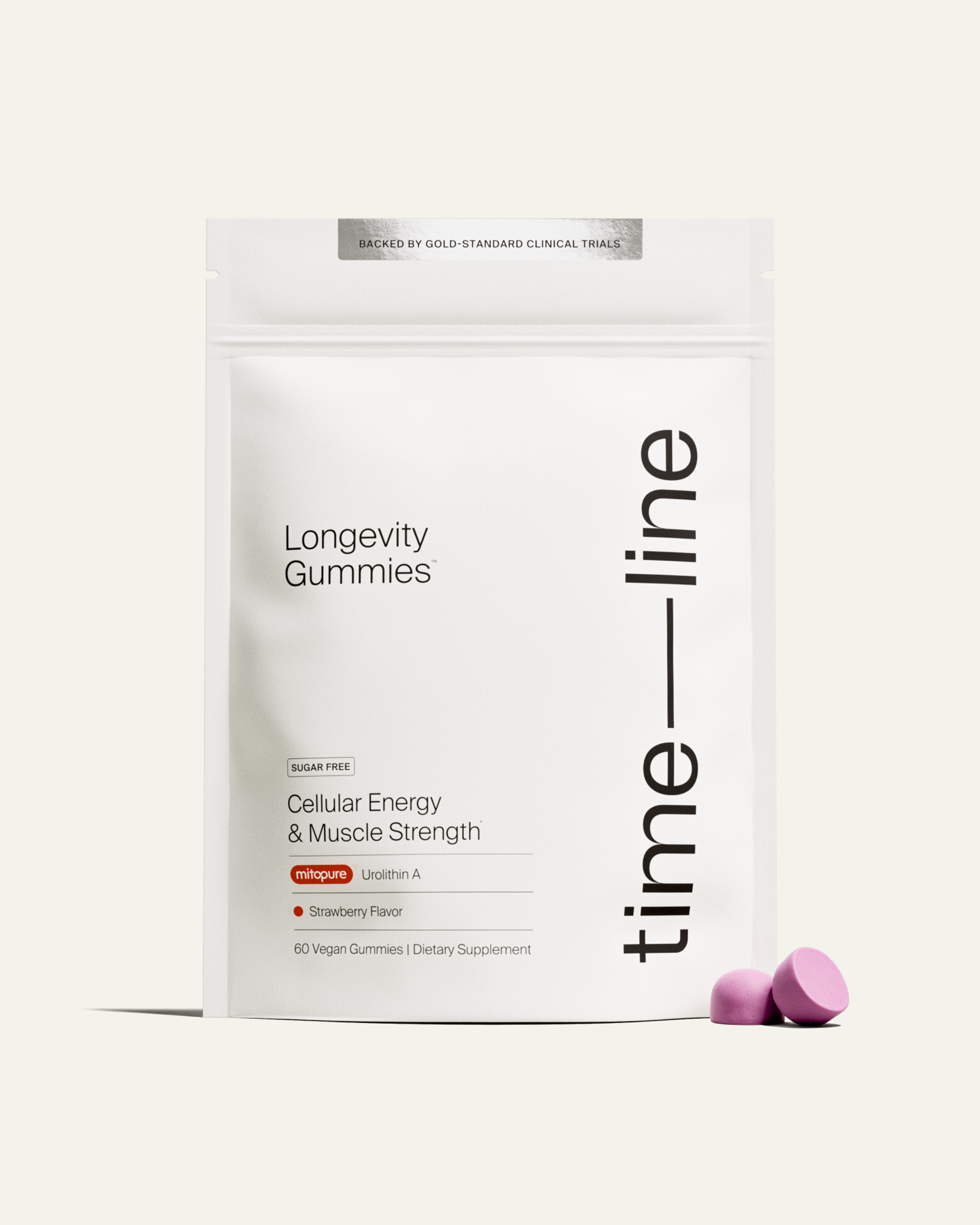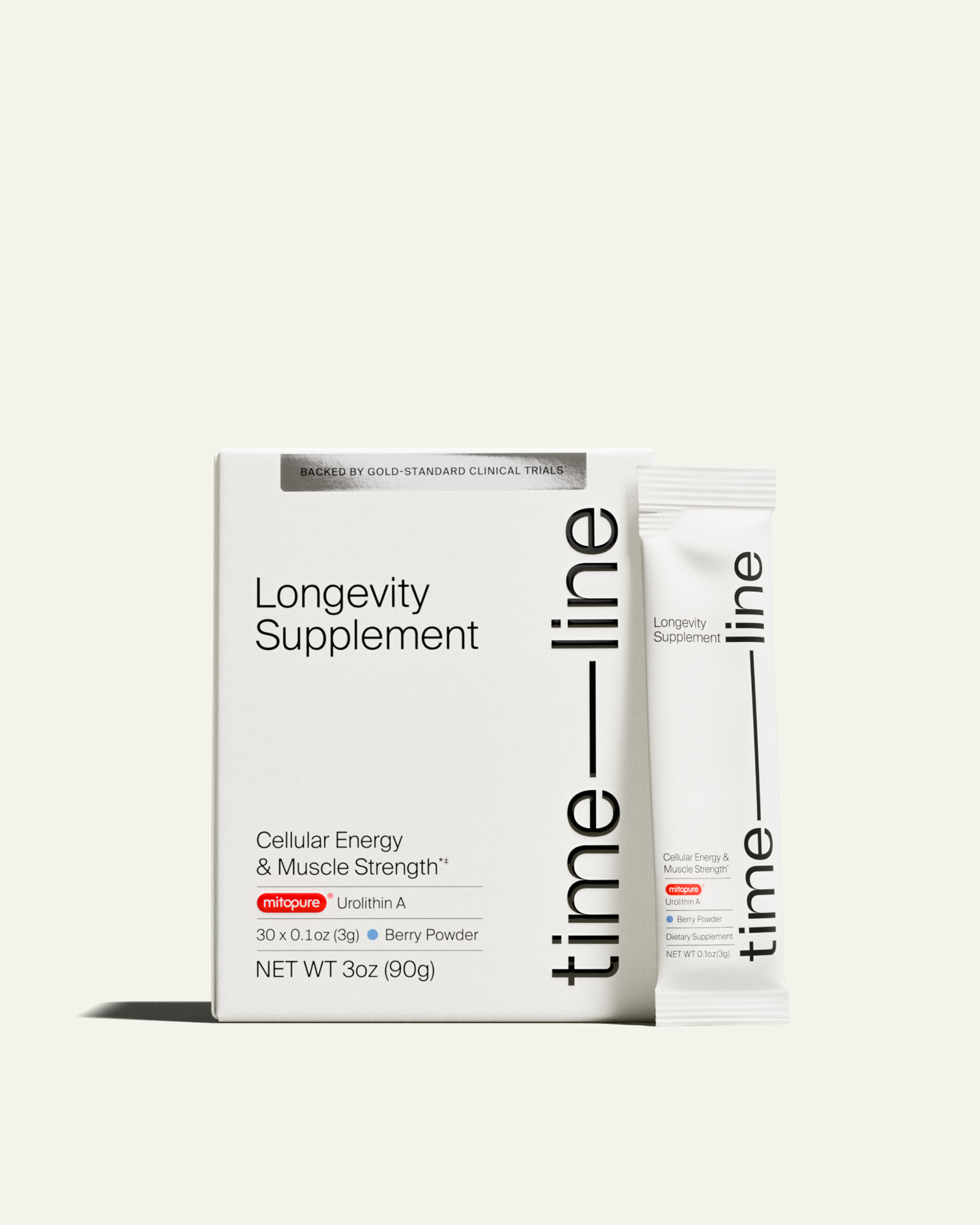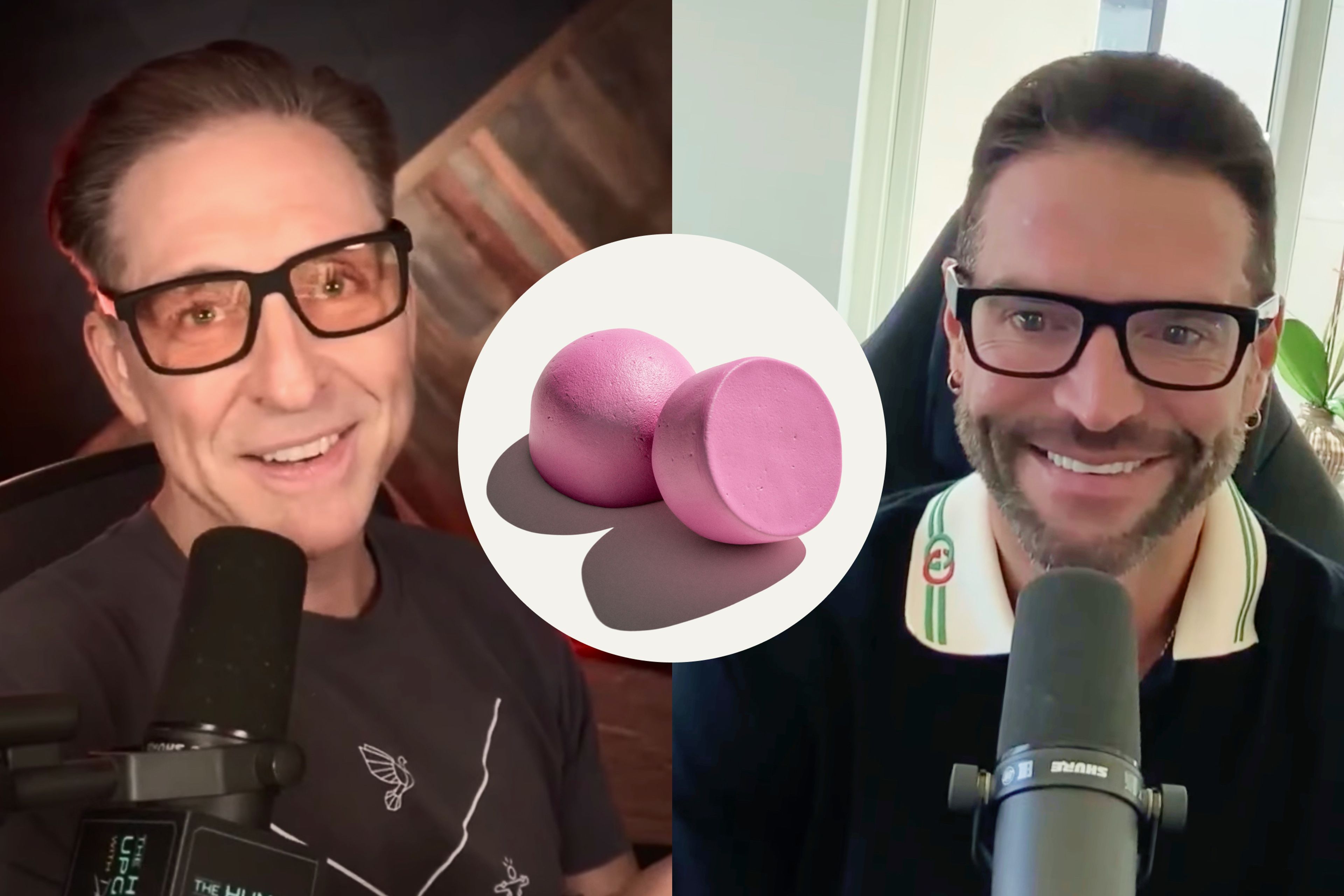The U-Shaped Happiness Curve: Why Happiness Peaks After 70
Life happiness trends upwards after midlife, with older adults feeling happier. Learn about this trend and ways to increase life satisfaction and joy.

What to know
The “U-shaped curve of happiness” says that you’re happiest when you’re young, experience a dip in midlife, then climb back to peak happiness after 70.
This curve is changing for young people, who are experiencing more anxiety and unhappiness earlier in life.
Late-life happiness may be caused by improvements in how we can think about ideas and how we react to them.
Older adults tend to have more positive outlooks than younger adults.
People who embrace positive attitudes about aging are happier and live longer.
The world tells you that aging is all decline. Your body won’t move like it used to, your mind won’t be as sharp, your skin will sag, and even your internal workings, like your cells, won’t pump out energy like they could when you were young.
Despite that, there’s one massive positive that increases as you go gray: you get happier.
The Global U-Shaped Curve of Happiness, Explained
The theory in social science is that happiness forms a U-shaped curve throughout your life. Adults start out happy, then see satisfaction dip in midlife, only to climb back to a peak in their golden years.
The U-shaped curve of happiness has been reported on since the early 2000s, and it’s just what it sounds like[1]: Life satisfaction starts out high in people’s 20s and 30s, and then declines, hitting the bottom of the “U” in their mid-40s to early 50s, depending on the survey. But then, happiness starts climbing again, reaching back towards the levels people experienced in their 20s, and peaking again after age 70. (Unhappiness, conversely, has been thought of as “hump-shaped,” starting and finishing low, and peaking during midlife.)
“We all live in this soup of the dominant narrative that ‘aging equals decline.’ But that’s not true,” says E. Ayn Welleford, Ph.D., associate professor in gerontology at Virginia Commonwealth University. “So many things get better as we get older that people either don’t quite know about, or don’t quite believe.”
Welleford and other gerontologists and happiness experts say we can hack our happiness to get these older-age benefits sooner, and start the climb up the happiness “U” faster.
Is The U-Shape Fading?
For years, researchers described this U-shaped curve. But recent global data suggest that things are changing.[2]
Over the last decade, large-scale international studies like the Global Flourishing Study have found that the low point of happiness has shifted. For many people, it now arrives much earlier, flattening or even reversing the curve. Early adulthood (our 20s and 30s) has become one of the most emotionally demanding stages of life.
Furthermore, this curve may look different for men and women. Since around 2014–2017, surveys such as the World Happiness Report and Gallup Global Emotions have revealed that younger generations, especially women, are reporting the highest rates of stress, anxiety, and unhappiness ever recorded.[3]
Midlife, once blamed for crisis, may actually be a period of increasing peace and happiness.
Role Overload in Midlife
For middle-aged and older adults who have followed the traditional U-shape, the decline in middle age, Welleford says, is in large part due to “role overload.”
“In young adulthood, your goal is to identify your own identity. So you take on a lot of roles,” she says. These roles can be things you do to further your career, start a family, and do other things that will define who you are and what your life is about. “It’s part of the natural process to try them on.”
In midlife, people can feel bogged down by the weight of so many roles, Welleford says, especially if they’re not all actually a fit. Not wanting to do the things you’ve done before, or be the person you’ve been before, are the hallmarks of what we think of as a “midlife crisis.” But shedding these ill-fitting roles isn’t a crisis; it’s actually what spurs becoming happier with age.
“As you move through midlife and into later adulthood, if you’re doing it optimally, you’re becoming more selective,” she says. And this selectivity is just one of the things that actually gets better with age.
What Gets Better With Age?
The idea that we automatically get “wiser with age” is as silly as the idea that age is all decline. Age by itself, Welleford says, causes nothing.
“If that were true, every 79-year old would be the same, and every 84-year old would be the same. The heterogeneity of aging is that when we get older, we become different from each other because of different life experiences,” she says. “We have to grow through struggle … whether that’s through post-traumatic growth, or anti-fragility, which goes beyond resilience and robustness.”
If you’re on the U-shaped path, and you’ve got those resilience-building experiences under your belt, the way you think, how you view what you think, and how you react to it all improve. Here’s what the research and our experts say gets better with age.
1. You Get Better at Holding Two Ideas at Once
As we age, our executive functioning improves, Welleford says. With it, we get better at integrative thought. We can hold two competing ideas in our minds at once, and not make snap judgments about them.
In addition to just being experience-based and getting “wiser with age,” physical changes to the brain may contribute here: As we get older, the branching of our neurons increases, strengthening connections between distant portions of the brain. This lets us better connect relationships between different sources of information.[4]
2. You’ve Got a More Positive Outlook
“When we look at studies comparing younger and older adults, there’s something called the ‘positivity effect’ or ‘positivity bias,’” says Michelle Feng, Ph.D., chief clinical officer at Executive Mental Health. “Older adults tend to remember more positive than negative information relative to younger adults.”
There are some questions among scientists as to whether this is good or bad; preliminary research has shown a correlation between seeing things too positively and cognitive decline, but no causation.
But research has shown that this positive outlook does not hurt older people’s decision-making. Studies that compared more positive older people with less positive younger people found that the older people were no more likely to make “suboptimal” decisions, and they felt better about their decisions afterwards.

3. You’re Better at Regulating Your Emotions
A bonus benefit of the positive outlook is that older people are better at regulating their emotions than either younger or middle-aged people. In one study from 2019, younger people were more likely to seek out negative situations and emotions, while middle-aged people tended to avoid both. But older people did neither. Instead, they were most likely to seek out positive outlooks and emotions in those same situations.[5]
Welleford believes the improvement in emotional regulation, when present in older people, is another result of experience: “You’re better at the pause before you fly off the handle because you have practice.”
4. You Shift Away From Big, Long-Term Goals
Older people tend to be drawn to things that bring them joy and happiness in the immediate, Feng says. This enables them to be more present in everyday life.
“When you’re 20 … you’re not thinking about how much time you have left. You’re thinking about how what you do now can help you in your future. So you might go to that mixer you don’t want to go to, because it might help you find the person you’re going to marry or get you that great job,” she says. This continues for some things as we age, but “we tend to shift and prioritize things that are more meaningful in the moment.”
This can unintentionally point us away from a “performance-driven” mindset, says Stephanie Harrison, a psychologist and the author of New Happy.
“Shifting from more self-focused, materialist, achievement-oriented pursuits” has been shown to improve life satisfaction, she says. “Studies have found that in diverse age groups, as you let go of this achievement obsession, it makes your life better psychologically.”

Four Ways to Get Happier Sooner and Faster
“The reality is that [life happiness] is so much more complicated” than a U-shaped curve, Feng says. “It’s just the mean. And the mean can really obscure the diversity: How you age and how happy you are is dependent on so many other factors than just the number of years you’ve lived. We actually have more control over our happiness.”
One of the key levers of that control, she says, is your mindset about aging.
“People with more positive self-perceptions of aging actually live longer and healthier,” she says, pointing to research from Yale that shows that people with a positive attitude about aging live 7.5 years longer. “The reality is, we don’t need to fight aging. It’s more about fighting the stories that make us fear aging.”
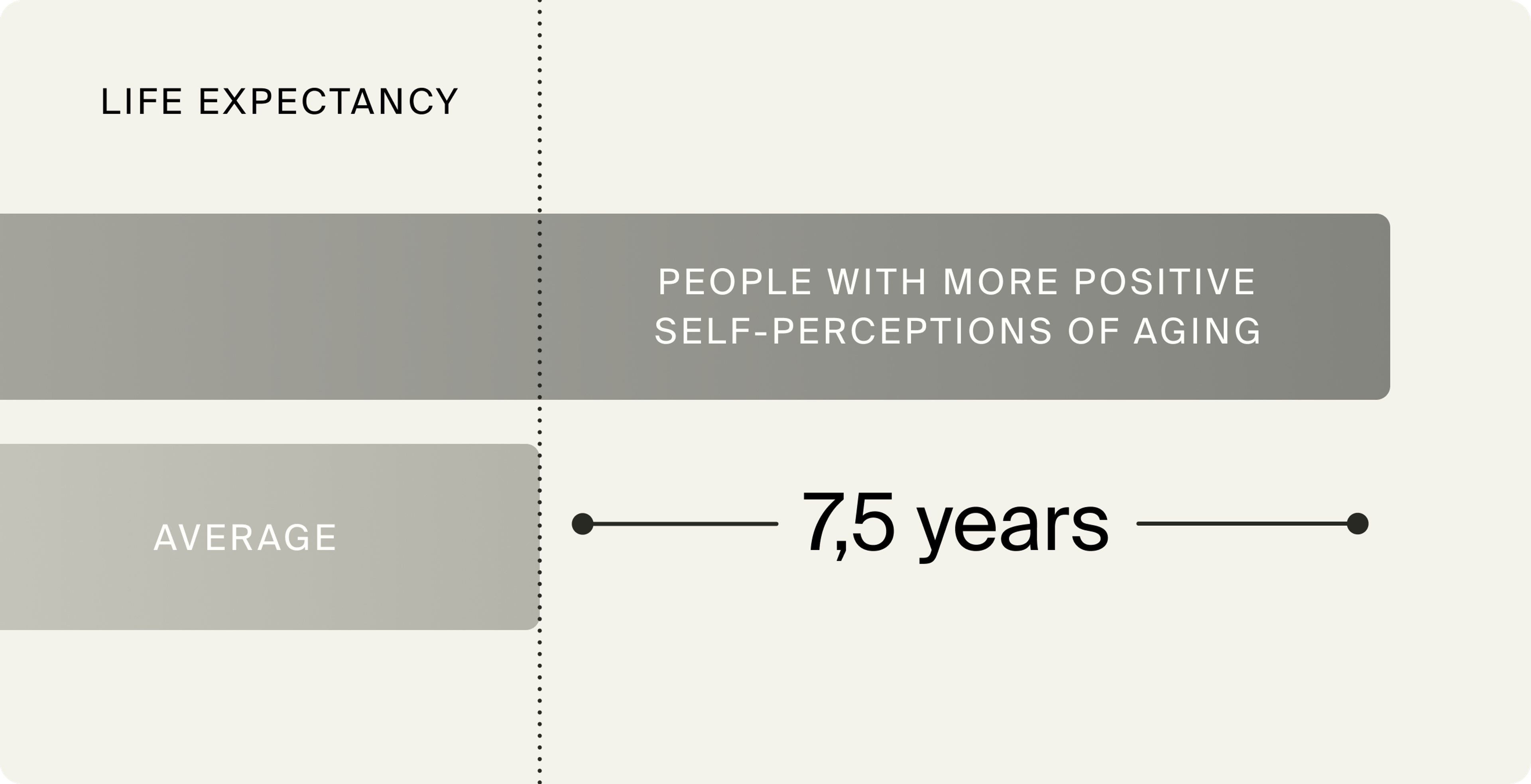
These four practices can help fight that story:
1. Name the Source of Problems, Instead of Just Blaming Age
“If someone says, ‘I feel so old today,’ … that’s just lazy labeling,” Welleford says. “When you ask them what that really means, they’ll say, ‘I’m really tired, or I didn’t sleep well last night, or I worked too hard in the garden yesterday, and now I’m all achy.’”
While age comes with challenges and hardships, you can take action to combat them. It remains important to be patient with yourself as your body evolves, but don’t resign yourself entirely.
If you’re sore from a workout or hard, physical work the day before, think of it as a good soreness that shows the work you did, rather than a sign of decline.
“If you’re blaming it on aging, then you’re saying, ‘there’s nothing I can do about it,’” she says. But you have more control over your functional ability than that. Name what you can control, and take action.
2. Spend Time With People Outside Your Normal Age Group
This means people who are younger and older than you, Feng says.
“Getting people together from different cohorts really helps our perspective,” she says. “It helps not just in terms of [giving and receiving] advice, but also combating the stereotypes of what an older person is, or a younger person is.”
The age gap doesn’t need to be huge, Welleford says.
“Find mentors who are older than you are, and it doesn’t have to be generations different. They just have to have a little more experience than you do,” she says. “Identify things in them that you see that are better through experience.”
3. Reinvest in Relationships, Starting Now
“One of the contributors that researchers have argued facilitates the climb in happiness with age is a reinvestment in relationships,” Harrison says. “If you want to accelerate that, start investing in that now.”
This reinvestment can be as small as making an effort to reach out to someone you know and love, but have fallen out of touch with, each day. Or, Harrison suggests, turn this into a family activity: Find community events and volunteering opportunities where you can build new social connections.
4. Grade Your Calendar
You don’t have to wait to be older to get the happiness-boosting benefits of being selective about the roles you take on and the activities you do, Welleford says. Start now with a “calendar excavation.”
“Go through the calendar of the last week or month … and put grades next to the activities,” she says. Give A’s and B’s to activities and events that brought you joy, or that you anticipated. “Which ones were ‘D’ and ‘F’ activities, where you thought, ‘I have such dread about this, and I hope this is canceled’?”
Just having this perspective can help you edit and become more selective, she says. There are certain “D” activities you’ll still have to do, but others can be skipped. If activities or roles are misaligned with your strengths or with what brings you joy, try to shed them now to be happier sooner.
Closing Remarks
The U-shaped curve of happiness reminds us that there’s another trajectory available: one of expansion. As we grow older, our resilience, perspective, and emotional regulation can deepen in ways that younger versions of ourselves couldn’t imagine.
Getting older doesn’t just mean adding years; it can mean getting more experienced at life.
Authors
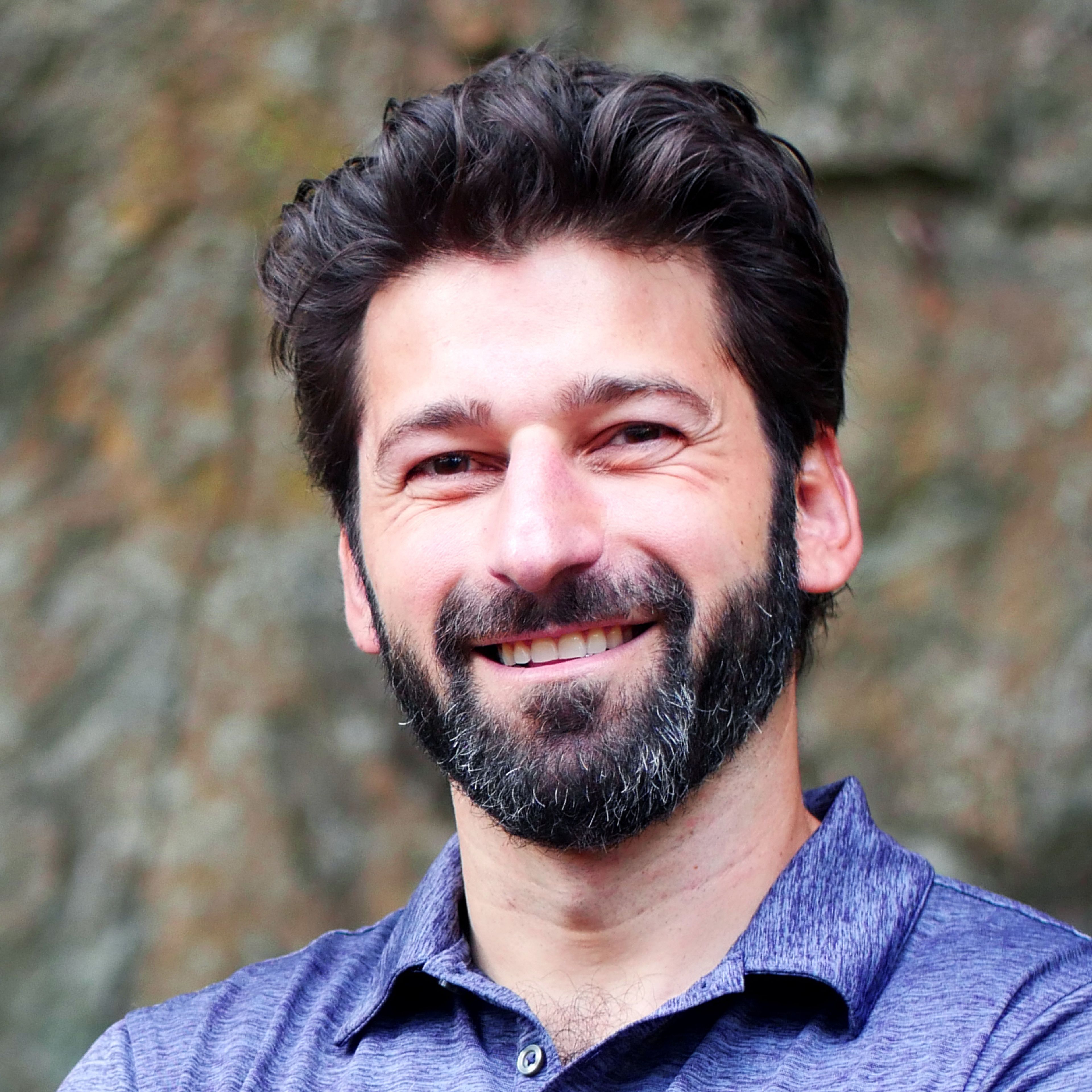
Written by
Health & Fitness Writer
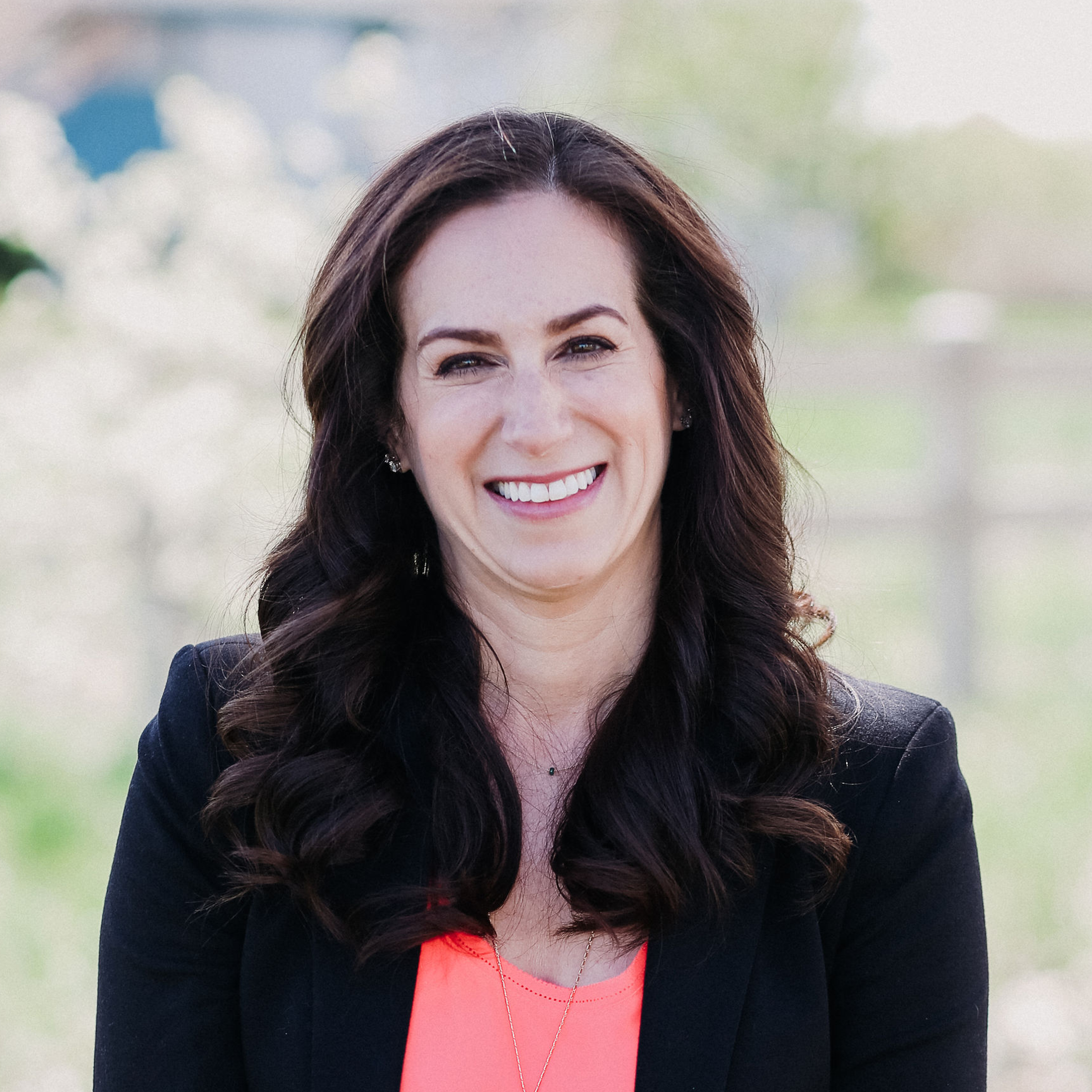
Reviewed by
Director Science Communications
References
- ↑
Blanchflower DG. Is happiness U-shaped everywhere? Age and subjective well-being in 145 countries. J Popul Econ. 2021;34(2):575-624. doi:10.1007/s00148-020-00797-z
- ↑
Aging isn’t just about decline. here’s how health improves as we grow older. Health. (n.d.). https://www.nationalgeographic.com/health/article/benefits-of-aging?rid=28E556EFD87D5248C551302FB521ED33&cmpid=org (https://www.google.com/url?q=https://www.nationalgeographic.com/health/article/benefits-of-aging?rid%3D28E556EFD87D5248C551302FB521ED33%26cmpid%3Dorg&sa=D&source=docs&ust=1762972429203634&usg=AOvVaw24Km0l09pb7t_a8voIFM33)
- ↑
Aging isn’t just about decline. here’s how health improves as we grow older. Health. (n.d.). https://www.nationalgeographic.com/health/article/benefits-of-aging?rid=28E556EFD87D5248C551302FB521ED33&cmpid=org (https://www.google.com/url?q=https://www.nationalgeographic.com/health/article/benefits-of-aging?rid%3D28E556EFD87D5248C551302FB521ED33%26cmpid%3Dorg&sa=D&source=docs&ust=1762972429204720&usg=AOvVaw3DFX5Oo0afED3JrecUTzxf)
- ↑
"How memory and thinking ability change with age." Harvard Medical School. August 30, 2017 (Accessed 7 October 2025)
- ↑
Livingstone, K. M., & Isaacowitz, D. M. (2021). Age and emotion regulation in daily life: Frequency, strategies, tactics, and effectiveness. Emotion (Washington, D.C.), 21(1), 39–51. https://doi.org/10.1037/emo0000672 (https://www.google.com/url?q=https://doi.org/10.1037/emo0000672&sa=D&source=docs&ust=1762972429199144&usg=AOvVaw1HUef4a6cJJCksqU5bBrYn)
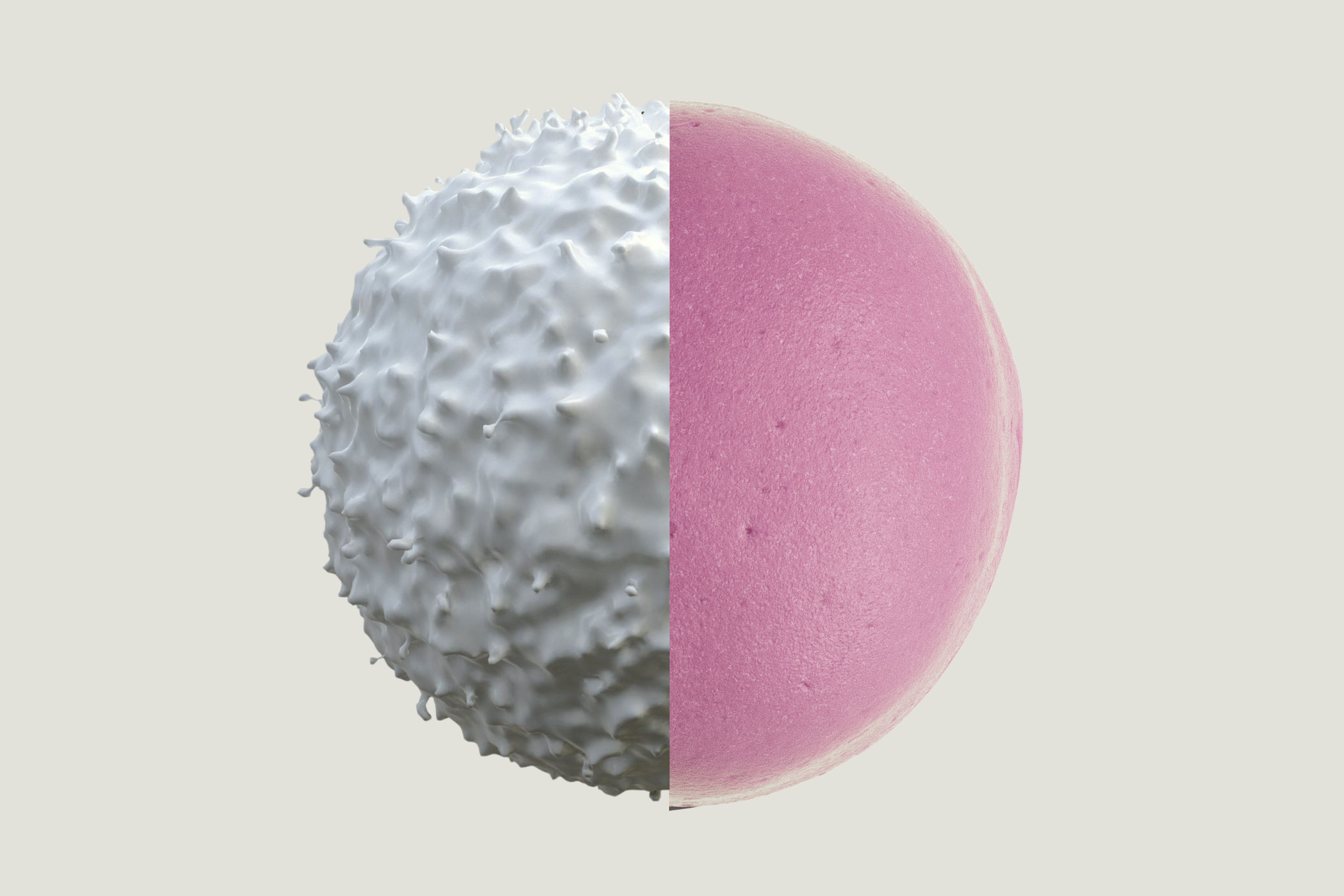
·
Nutrition·
Studies·
